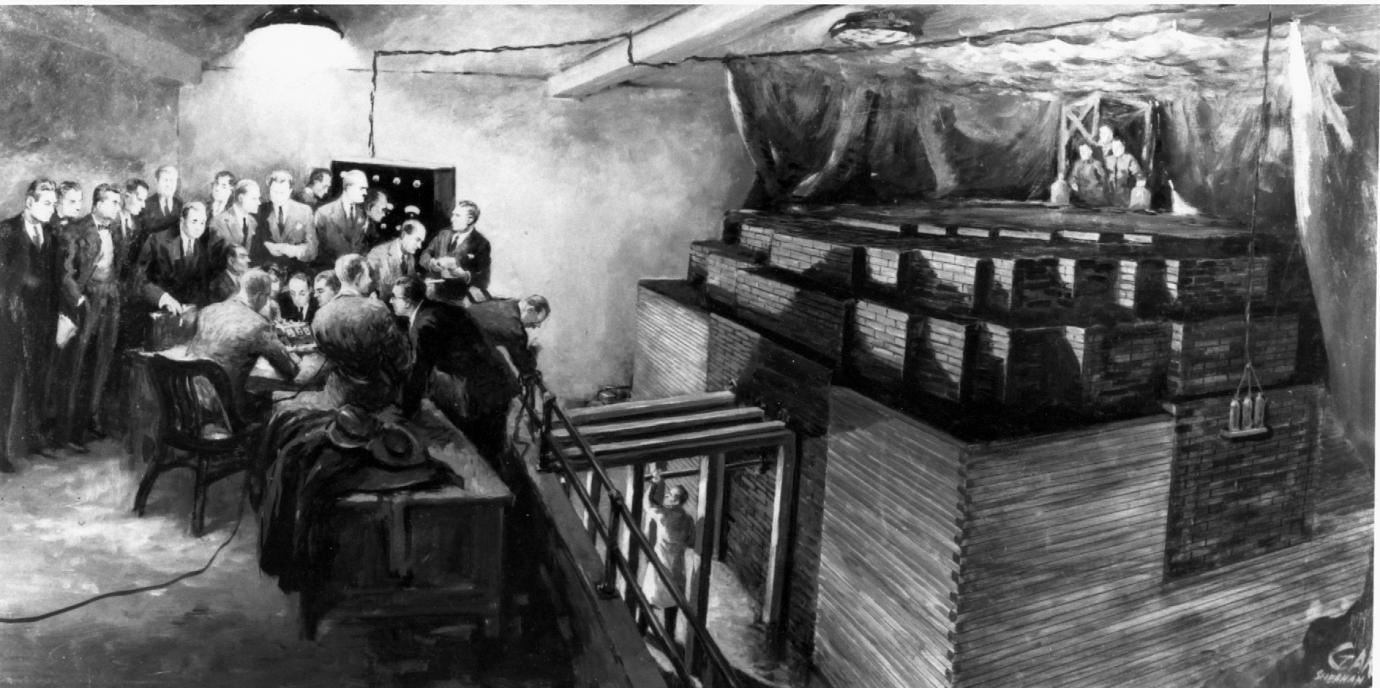
Did you know the world’s first sustained nuclear reaction was achieved on a squash court beneath Stagg Field at the University of Chicago? The moment sparked the controversial age of nuclear power and also nuclear weapons.
A key moment in the Manhattan Project, the experiment in Chicago was designed to prove a scalable, sustained nuclear reaction was possible. With hundreds of people working on the project the reactor ultimately took two weeks to construct and on Dec. 2, 1942, the first nuclear self-sustaining chain reaction was achieved in 28 minutes.
The 49 scientists present at the reaction celebrated with Chianti wine drank from paper cups. Following the reaction, the reactor was transported to a forest preserve outside Chicago and disassembled. The scientists and equipment involved in the project were reorganized to pursue peaceful uses of atomic energy, becoming the nation’s first national lab, the Argonne National Laboratory.
Nuclear fission went on to be used in energy, weapons systems, chemistry and biological studies and many breakthrough medicinal applications. The use of nuclear fission in all of these settings presented world altering changes to how humans interact with the world.



